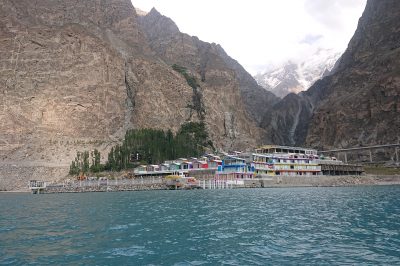Attabad Lake, located in Gilgit-Baltistan, Pakistan, in the heart of the magnificent Karakoram Range, is a tribute to the incredible elements of nature and the determination of local communities. Attabad Lake, also known as Gojal Lake, is a reservoir in the Gojal Valley of the Hunza District. What makes it truly unique is its remarkable creation – the result of a massive landslide that dammed the Hunza River.
This breathtaking lake was created in 2010 due to a disastrous landslip, and it has since turned a tragedy into a captivating spectacle that draws visitors from all over the world. The vivid blue waters of Attabad Lake have become a symbol of nature’s beauty and the indomitable spirit of the people who call this region home.
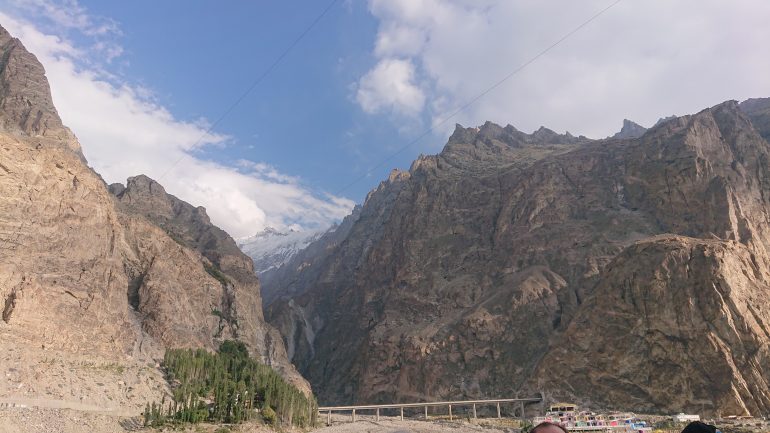
On January 4, 2010, the inception of Attabad Lake was marked by a massive landslide that blocked the flow of the Hunza River, creating a natural dam and submerging nearby villages, roads, and agricultural land. This calamity, triggered by an earthquake, led to the loss of lives and property, displacing thousands of residents. However, amidst the tragedy, a silver lining emerged as a new lake was born, eventually named Attabad Lake after the village it engulfed.
Beyond its visual allure, Attabad Lake has become a symbol of resilience and adaptability. The village of Attabad and neighboring settlements faced catastrophic devastation, claiming lives and displacing over 6000 residents who found themselves stranded for days. Despite the upheaval, the local communities exhibited remarkable adaptability, refusing to succumb to despair. The villages, once thriving along the banks of the Hunza River, now lay submerged beneath the waters of Attabad Lake. This capacity to embrace and adjust to the new reality demonstrates a resilience that extends beyond the lake’s visual beauty, transforming it into a testimony to the human spirit’s power in the face of adversity.
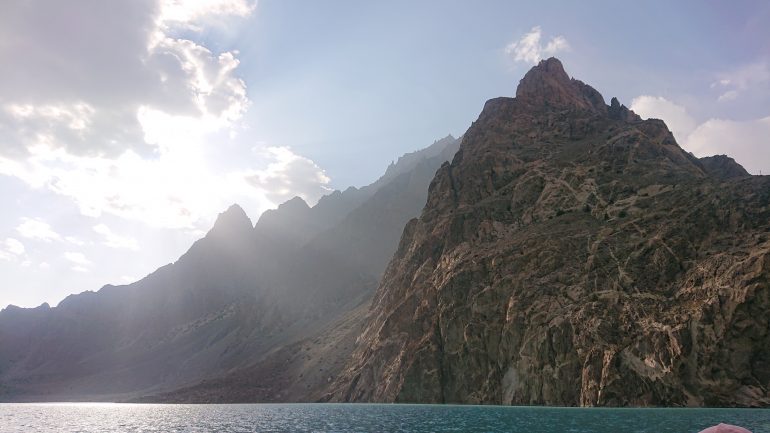
What distinguishes Attabad Lake is its surreal, almost ethereal, shade of blue. The lake’s brilliant color is caused by glacial sediment suspended in the water, giving it a distinct azure tint that captivates anybody who sees it. The intensity of the color varies with the changing sunlight, creating a dynamic and enchanting visual experience.
Beyond its aesthetic appeal, Attabad Lake has become a vital resource for the region. The lake spans approximately 21 kilometers and reaches depths of up to 358 feet, making it one of the largest lakes in Pakistan. It serves as a reservoir, storing water crucial for irrigation and supporting agriculture in the downstream areas.
Moreover, Attabad Lake has become a hub for adventure tourism, attracting thrill-seekers and nature enthusiasts alike. The pristine waters offer opportunities for boating, kayaking, and fishing. The surrounding landscape, with towering mountains and lush greenery, provides a stunning backdrop for trekkers and hikers.
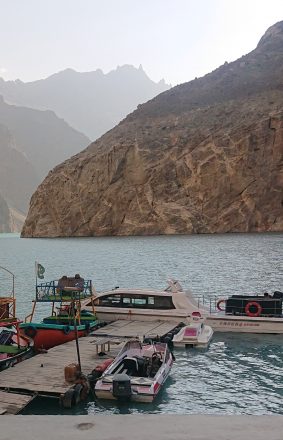
Boating has become a central element of life on Attabad Lake. Vibrant wooden boats adorned with colorful embellishments navigate the expanse of the lake, ferrying locals and tourists alike. The boats seem to dance on the water, carrying with them the stories of a community that has found solace and sustenance in the face of upheaval. It’s a poignant reminder that life persists even in the wake of tragedy, and communities find ways to thrive.
Tourism at Attabad Lake has experienced a significant surge in recent years, contributing to the region’s economic development. The influx of visitors has led to the establishment of small businesses, hotels, and recreational facilities, providing employment opportunities for the local population. Additionally, the government has recognized the potential of Attabad Lake as a tourist destination and has invested in infrastructure development to enhance accessibility.
The construction of the Attabad Tunnel, completed in 2015, has played a pivotal role in connecting the previously isolated communities on either side of the lake. The tunnel, which runs alongside the lake, has facilitated transportation and become an engineering marvel, attracting worldwide admiration from experts worldwide. The improved connectivity has boosted tourism and strengthened social and economic ties between different regions.
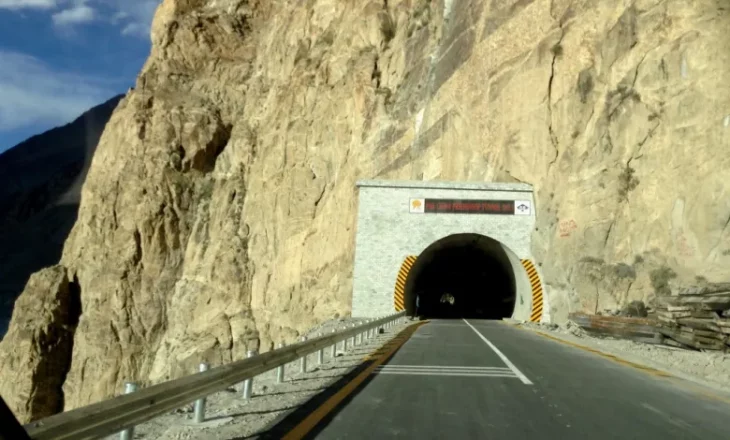
Despite the positive developments, challenges persist. The risk of landslides and the potential for the dam to breach remain concerns that demand continuous monitoring and mitigation efforts. The stability of the natural dam is crucial for the safety of downstream communities, and investments in advanced technologies for early warning systems and geotechnical studies are essential.
Furthermore, sustainable tourism practices must be prioritized to ensure the long-term health of Attabad Lake. The delicate ecosystem surrounding the lake, including diverse flora and fauna, requires conservation measures to prevent degradation. Community engagement and responsible tourism initiatives can play a pivotal role in preserving the pristine beauty of this natural wonder. Efforts to promote responsible tourism and conservation initiatives are crucial to maintaining the pure beauty of Attabad Lake for generations to come.
Also Read: National symbols as bridges between past and future
Through innovative efforts, promoting and preserving Attabad Lake can draw inspiration from successful foreign models that have effectively managed and sustained natural attractions. Using Costa Rica’s eco-tourism initiatives, Pakistan can develop sustainable practices around Attabad Lake, such as low-impact accommodations and educational programs, stressing responsible tourism to minimize environmental impact.
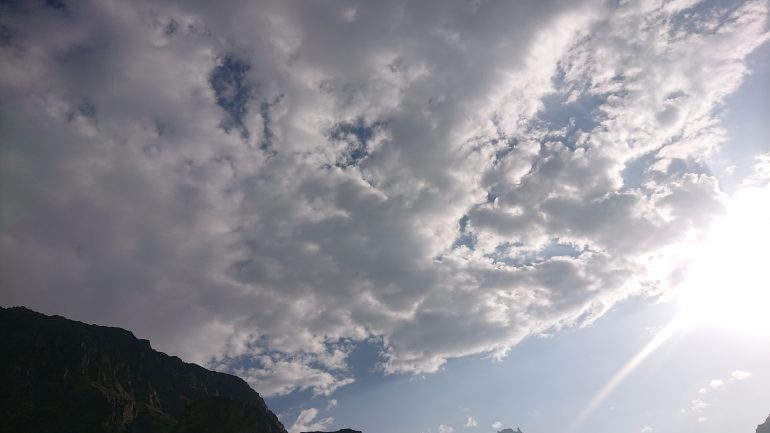
Iceland’s community-based conservation approach provides a model for engaging local communities in managing tourism activities around the lake. A sense of ownership can be fostered by empowering them as stewards and ensuring equitable distribution of economic benefits.
New Zealand’s success with public-private partnerships can be applied to Attabad Lake, encouraging collaboration between the government, local communities, and private enterprises to create and maintain tourism infrastructure. Leveraging innovative technology, as seen in Singapore, can enhance the visitor experience through smart solutions like mobile apps for guided tours and real-time monitoring systems.
Australia’s Great Barrier Reef emphasizes education and interpretation to raise awareness about the importance of conservation, a model that could be adapted for Attabad Lake. Developing educational programs and interpretive signage can inform visitors about the lake’s ecological significance, fostering a sense of responsibility among tourists.
Switzerland‘s focus on sustainable transportation in its mountainous regions can be explored for Attabad Lake, introducing eco-friendly options such as electric boats or vehicles to reduce emissions and minimize ecological impact.
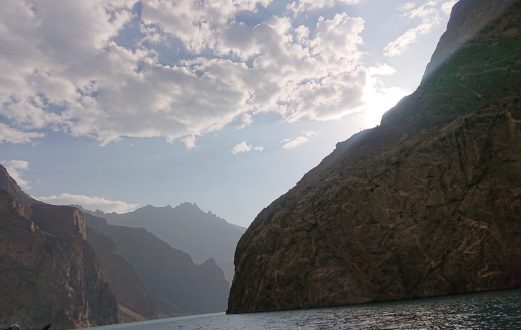
These foreign models, adapted to the local context, can collectively contribute to the holistic promotion and preservation of Attabad Lake. Lastly, strategic marketing campaigns can showcase the unique features of Attabad Lake, emphasizing its cultural and ecological significance. Utilizing digital platforms to reach a global audience will attract responsible travelers, ensuring the lake remains a pristine jewel for generations.
Looking out over the brilliant blue waters of Attabad Lake and wondering about the stories carved into its depths, we find ourselves compelled to reflect on the relationship between nature and people and the potential for rebirth that both possess. Attabad Lake is more than just a place on the map; it is a live example of how the natural world can restore and revitalize people, leaving a lasting impression on those lucky enough to experience its splendor.
International Relations Scholar interested in National Security strategies, with a good focus on Geo-Politics, Foreign Policy, and Public & Cultural Diplomacy.

